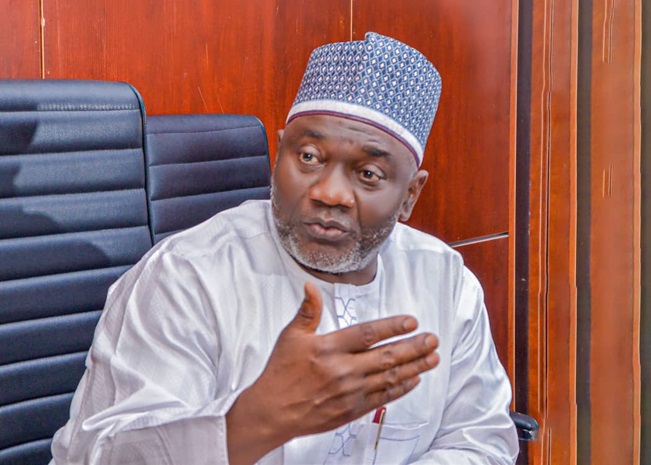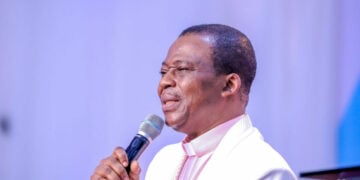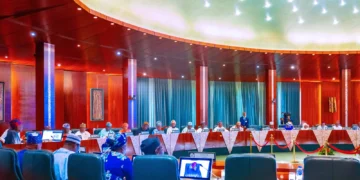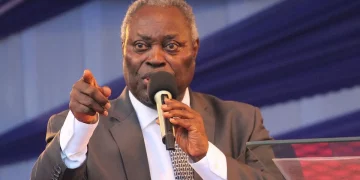In the evolving narrative of Nigeria’s infrastructural renewal, there emerges a defining moment for every region—a test of whether its people can transform shared neglect into collective advocacy. For the Igala Nation, that moment has arrived. The motion recently moved by Distinguished Senator Jibrin Isah (Echocho), calling for the inclusion of the Anyigba–Dekina–Shitanku road in President Bola Ahmed Tinubu’s Renewed Hope Infrastructure Fund (RHIF), should not be treated as another routine legislative motion. It represents a rare opening for the people of Kogi East to demand what is rightfully theirs: a functional transport artery that connects commerce, culture, and opportunity.
For decades, the Anyigba–Dekina–Shitanku corridor has been more than a road—it has been a lifeline. It connects the commercial dynamism of Anyigba, the administrative core of Dekina, and the agrarian strength of the Shitanku axis. It is the path through which farmers ferry yams, cassava, and grains to regional markets; students commute to Kogi State University and nearby institutions; and small businesses sustain livelihoods. Yet, its current state tells a story of structural abandonment. Deep gullies have replaced asphalt; what should be a conduit of growth has become a graveyard of productivity. In the rainy season, the journey that once took an hour can now take an entire day. The neglect is not just physical—it is symbolic of a broader infrastructural marginalization of the Igala region within Nigeria’s development calculus.
Senator Echocho’s motion, therefore, stands as a timely intervention—a legislative torchlight shining upon a neglected artery. More importantly, it aligns with the Tinubu administration’s Renewed Hope Agenda, which seeks to prioritize infrastructure as the engine of national productivity. The Renewed Hope Infrastructure Fund, designed to mobilize both public and private financing for critical transport projects, is already being deployed in regions that have successfully amplified their local needs. For example, in the South-West, the Lagos–Ibadan Expressway rehabilitation and the Ogun State Agro-Cargo Airport access roads were integrated into federal funding frameworks after sustained advocacy from regional stakeholders and state governments. In the South-East, the Enugu–Onitsha and Enugu–Port Harcourt expressway projects received priority funding following united pressure from governors, legislators, and civic organizations who refused to let their voices fade into procedural quiet.
The North-Central cannot afford to lag behind while others seize the momentum of advocacy. If the Ukomu Igala Organization—as the cultural and intellectual voice of the Igala people—rallies behind this motion, it can trigger a chain of action that ensures inclusion of the Anyigba–Dekina–Shitanku project in the next tranche of federal infrastructure approvals. The organization’s influence, drawn from its historical legitimacy and strategic reach, positions it as the most credible convener of Igala consensus. Through an urgent press conference, policy briefs, and consultations with the Federal Ministry of Works, Ukomu Igala can help translate legislative motion into executive action.
Infrastructure, after all, is the silent foundation upon which equity and development rest. In Nigeria’s diverse federation, visibility often correlates with vocality—those who organize and advocate get results. When the Kano–Maiduguri Expressway was rehabilitated under previous administrations, it was not because it was the most damaged road in the country, but because Northern stakeholders mobilized cross-sectoral pressure—traditional rulers, business leaders, and civil society all speaking with one voice. Similarly, the Second Niger Bridge, long considered a political mirage, only came to fruition when sustained regional agitation made its exclusion politically untenable. The Igala Nation can, and should, draw from these precedents.
The Anyigba–Dekina–Shitanku road project has implications that go beyond Kogi East. It serves as a strategic link between the Eastern flank of Kogi and neighboring states such as Benue and Enugu, facilitating inter-regional trade and easing mobility for agricultural exports. Its rehabilitation would reduce transport costs, encourage investment, and integrate local markets into the broader North-Central economic grid. In development economics, such corridors are often described as “growth multipliers” because they stimulate a chain of secondary benefits—from property appreciation to job creation and rural industrialization.
The logic, therefore, is simple: rebuilding this road is not a favour to the Igala people—it is an act of national economic prudence. For President Tinubu, whose administration seeks to redefine infrastructure as a catalyst for inclusive prosperity, the Anyigba–Dekina–Shitanku corridor offers a low-hanging fruit—an opportunity to tangibly demonstrate that Renewed Hope is not an abstract slogan, but a measurable policy reality reaching every geopolitical corner.
Yet, as history has shown, motions in Nigeria’s legislature often die in committee rooms if they are not followed by sustained public engagement. That is why every stakeholder must now act. Traditional rulers should lend moral authority; youth and student groups should generate social media momentum; professional associations must engage through policy briefs and advocacy letters. The goal should be to create a development movement around the road—an ecosystem of advocacy that compels action.
Infrastructural justice, like democracy itself, thrives only when citizens insist on accountability. Senator Echocho has performed his duty as a legislator by placing the motion on record. It now falls on the Igala people, and particularly the Ukomu Igala Organization, to ensure that this motion does not become another forgotten paragraph in the annals of parliamentary proceedings. The path from motion to project requires pressure, persistence, and partnership.
When the history of this era is written, the question will not be whether the Anyigba–Dekina–Shitanku road was bad—it has always been—but whether the people most affected rose to demand its redemption. This is that defining hour. The Igala people have the numbers, the moral legitimacy, and the institutional structure to make their case heard. What is required now is unity of purpose and clarity of message.
Senator Echocho has spoken for his people. Let the people now speak with him—so that President Tinubu may act for them.
Critically musing





